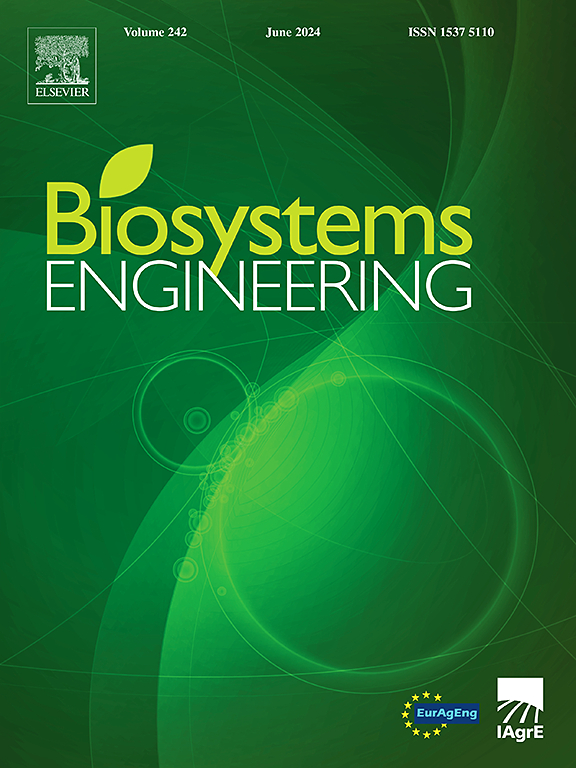Non-ideal continuously stirred bioreactor model for multi-media denitrifying processes
IF 4.4
1区 农林科学
Q1 AGRICULTURAL ENGINEERING
引用次数: 0
Abstract
Denitrifying bioreactors are used to treat excess nutrients in agricultural runoff. Efforts to optimise bioreactor design focus on increasing rates of denitrification while reducing hydraulic residence times (HRTs). However, the internal hydraulics that dictate bioreactor efficiency are difficult to characterise. A general bioreactor model is presented that includes non-ideal flow using combined plug and continuously stirred reactors (CSTRs) with dead space and short-circuiting based on zero and first order reaction coefficients. Reactor characteristics of a novel media mixture of walnut shell biochar, Brotex, and woodchips were defined using a conservative tracer (bromide) for two HRTs (12 and 4 h). The fraction of dead space, non-short-circuiting fraction, and the number of reactors were obtained by matching the model's response to measured tracer outflow curves. Secondary parameters calculated include hydraulic efficiency, effective volume, volumetric efficiency, and the Morrill Dispersion Index. The model characterised the reactors as having 1.1 % plug flow with no short-circuiting or dead space and four CSTRs (98.9 % of flow) with 3.7 % short-circuiting and 1.1 % dead space. The closeness between the theoretical and actual HRTs (−6 % for the 12 h design and −4 % for the 4 h design) demonstrates the high level of hydraulic efficiency of this novel bioreactor design as well as the model's ability to properly characterise complicated flow regimes. Additionally, this model can help provide insight into bioreactor performance under a wide range of design criteria, leading to computational supported advancements in bioreactor science.
多介质反硝化非理想连续搅拌生物反应器模型
反硝化生物反应器用于处理农业径流中过量的营养物质。优化生物反应器设计的重点是提高脱氮率,同时减少水力停留时间(HRTs)。然而,决定生物反应器效率的内部水力学很难描述。基于零级反应系数和一阶反应系数,建立了含死区和短路的塞式连续搅拌组合式生物反应器模型。在两个hrt(12和4 h)中,使用保守示踪剂(溴)定义了核桃壳生物炭、Brotex和木屑的新型介质混合物的反应器特性。通过匹配模型对示踪剂流出曲线的响应,获得了死区分数、非短路分数和反应器数量。计算的次要参数包括水力效率、有效容积、容积效率和莫里尔分散指数。该模型将反应器描述为具有1.1%的塞流,无短路或死区,四个cstr(98.9%的流量)具有3.7%的短路和1.1%的死区。理论和实际hrt之间的接近(12小时设计为- 6%,4小时设计为- 4%)证明了这种新型生物反应器设计的高水平水力效率以及该模型正确表征复杂流动状态的能力。此外,该模型可以帮助深入了解生物反应器在各种设计标准下的性能,从而在生物反应器科学中实现计算支持的进步。
本文章由计算机程序翻译,如有差异,请以英文原文为准。
求助全文
约1分钟内获得全文
求助全文
来源期刊

Biosystems Engineering
农林科学-农业工程
CiteScore
10.60
自引率
7.80%
发文量
239
审稿时长
53 days
期刊介绍:
Biosystems Engineering publishes research in engineering and the physical sciences that represent advances in understanding or modelling of the performance of biological systems for sustainable developments in land use and the environment, agriculture and amenity, bioproduction processes and the food chain. The subject matter of the journal reflects the wide range and interdisciplinary nature of research in engineering for biological systems.
 求助内容:
求助内容: 应助结果提醒方式:
应助结果提醒方式:


